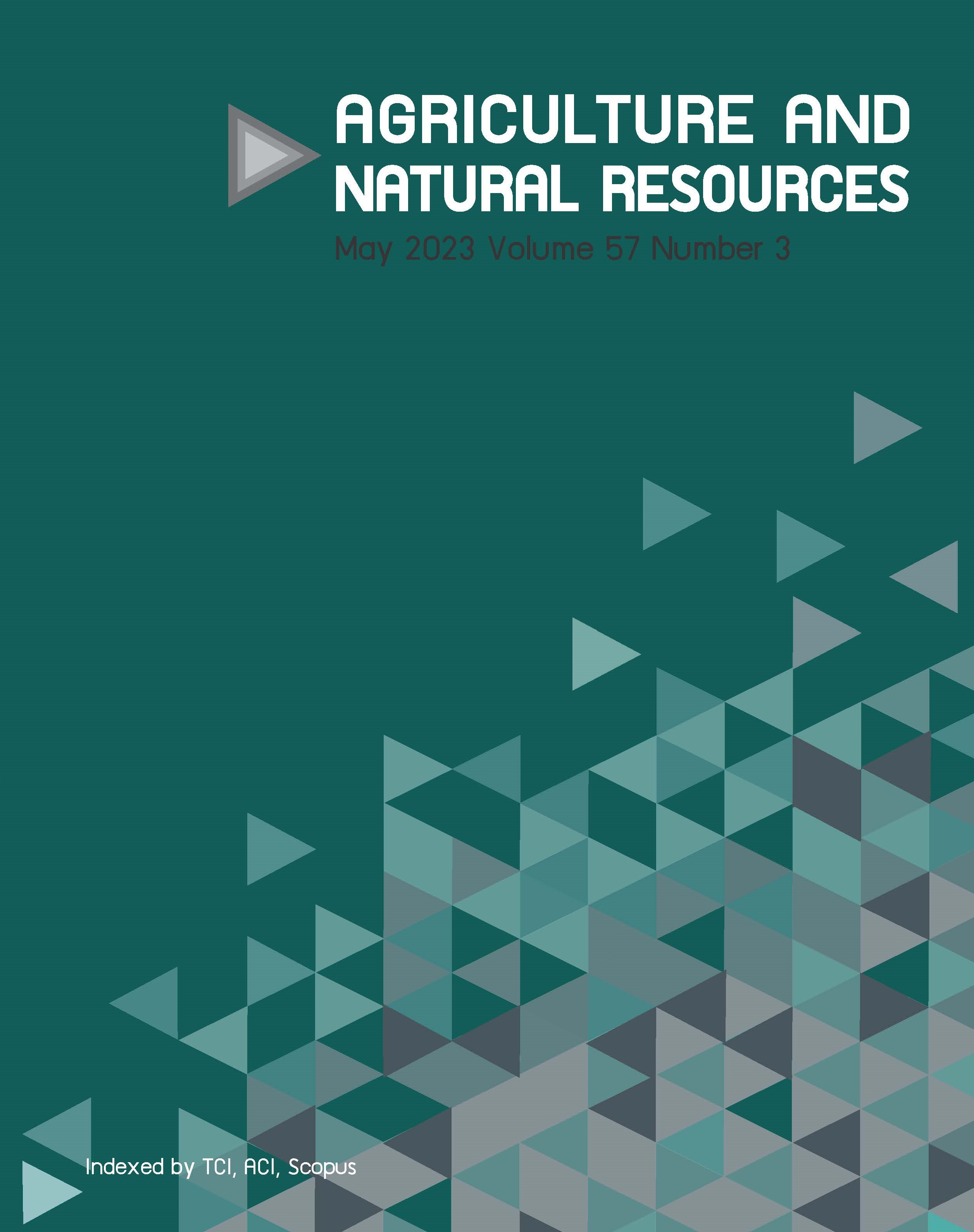Effects on phenotypic and genotypic modifications of low-pressure radiofrequency capacitively coupled plasma treatment of Thai purple glutinous rice seeds
Keywords:
Mutant, Oxygen plasma (O-plasma), Radiofrequency capacitively coupled plasma (RF-CCP), Seed, Thai purple glutinous riceAbstract
Importance of the work: Low-pressure radiofrequency capacitively coupled plasma (RF-CCP) affects biological material modifications. However, the effective parameters with the more pivotal roles have not yet been clearly identified based on demonstration.
Objectives: To investigate the effects of RF-CCP treatment of rice (Oryza sativa ‘Leum Pua’) seeds on phenotypic and genotypic modifications.
Materials & Methods: The effects of the gas type on the seed texture were explored using nitrogen (N), argon (Ar), helium (He) and oxygen (O) as source gases in the plasma treatment of the seeds, with a fixed treatment time of 5 min for each experiment. Subsequently, the treatment time duration (15–30 min) effect on the seed germination was studied using O-plasma. High annealing temperature, random-amplified polymorphic DNA (HAT-RAPD) was used to analyze genetic variation between the mutant and control rice samples.
Results: Only O-plasma caused cracks on the rice seed surface; however, a fixing treatment time of 5 min produced no phenotypic change in the plasma of the treated rice. Increasing the treatment time using O-plasma at 15 min, 25 min and 30 min decreased the germination rates by approximately 50%, 23% and 20%, respectively. With the treatment time of 30 min, one rice seedling had phenotypic changes (short stem and green color in the leaf and pale in the rice husk). The HAT-RAPD investigation showed that 3 of the 10 arbitrary primers revealed genetic modifications in the rice mutant induced by the RF-CCP treatment.
Main finding: RF-CCP could act as a promising tool for inducing mutations in rice with its advantages being a relatively simple system, low cost and convenient operation and maintenance.
Downloads
Published
How to Cite
Issue
Section
License
Copyright (c) 2023 Kasetsart Universityonline 2452-316X print 2468-1458/Copyright © 2022. This is an open access article under the CC BY-NC-ND license (http://creativecommons.org/licenses/by-nc-nd/4.0/),
production and hosting by Kasetsart University of Research and Development Institute on behalf of Kasetsart University.







